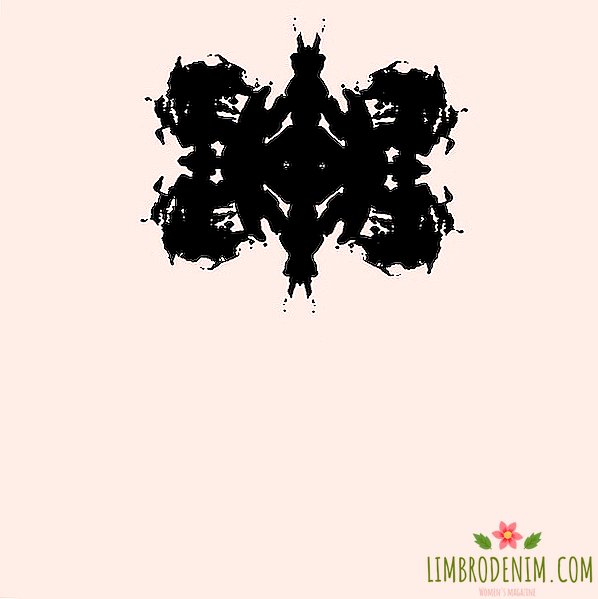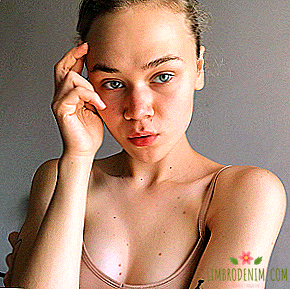Turnip Craft: How We Sell Organic Products
For successful sales of organic products direct indications of their purity and environmental friendliness are no longer enough — we are no less effectively affected by the way in which we receive the goods. Organic food departments in supermarkets are especially fashionable, and, moreover, eco-products are often located right at the entrance to the store (came, saw, bought the best at once), while the "usual" food is stored in the far rows of the store without a chance to get to the dining table townspeople. It is not possible to go past eco-shop windows without a sense of inferiority: the extremely crafting design clearly explains to those who are not understanding how cool (and expensive) everything is organic. In addition, these products are produced in such perfect packages that it is sometimes a pity to open them.

It’s not so much that they sell to us, but in the form in which it is presented, from advertising to packaging.
It is still not completely clear what organic products outperform ordinary ones. The American FDA, a global authority on drug quality and nutrition, advocates for the idea of organic products and provides certification and regulation in this area. But there are alternative opinions. British economist Roger Cohen wrote a smashing column for The New York Times, in which he debunked the myth about organic food and called all the hype around it “an effective form of premium branding,” and his colleague Tyler Cowan, author of An Economist Gets Lunch, in an interview Business Insider noted that "organic label is important for many people, but using such products will not make us healthier."
According to Cowan, consumers do not at all delve into the scientific data on this issue, but in vain, because many scientists are really skeptical. Researchers at Stanford University have found that organic products "do not have significant advantages over conventional ones" - neither in terms of vitamins, nor in terms of the content of toxic substances - although consumers readily pay for them more.
One thing is absolutely clear: supply frankly dictates demand. This is neither bad nor good - the consumer culture has followed this path. Sales of organic products are growing twice as fast as the segment of regular products. Moreover, according to Transparency Market Research, in just five years - from 2010 to 2015 - the global market for organic products has grown from $ 57 billion to $ 105 billion. The paradox is obvious: the point is not so much what they sell to us, but in the form in which it is presented - from advertising to packaging design.
The design of organic food packages has formed a number of trends: environmental friendliness, minimalism and cleanliness of forms, a kind of visual authenticity. Concern about the environmental friendliness of raw materials is understandable: fans of healthy eating are concerned not only with the ethics of food production, but also with the way they are stored. Many are concerned that the synthetic substances in the package may react with food, however, even if this occurs, such contact does not necessarily harm health. However, in the USA, China, Canada, the United Arab Emirates and the EU countries, the composition of packaging materials is rather strictly regulated and often does not allow the presence of substances like bisphenol A, which is officially recognized as toxic. In turn, manufacturers of eco-products choose technological derivatives of natural materials for containers and wrappers, produce goods in recyclable, multifunctional or even edible packages.

Letters, as if bred by a trembling hand, and a tray of eggs with hay inside are meant to hint at the environmental friendliness of the goods.
As for minimalism, everything is also clear: the mass smart design relies on it in all spheres of life. Helvetica still fits perfectly on any faded background, and nothing seems to be better than Tetra Pak so far. As for the so-called visual authenticity of the package, it sometimes comes to the comical. In the shock group of techniques there are “handwritten” fonts (intricate vintage or, on the contrary, naive, raw), outline illustrations in the style of children’s sketches, earth tones, “raw” textures - from coarse twine to bright-colored craft paper. Letters on a bottle of organic juice, as if bred by a trembling hand, the shell as a package for deodorant crystal and a tray of eggs with hay inside are meant to hint at the utmost environmental friendliness of the goods.
However, trends in the design of organic products migrated to the category of global trends in packaging design, and the result is somewhat deceptive. A cream consisting of solid parabens can also end up in a nice wooden jar, and in most supermarkets through environmentally friendly Austria there will certainly be yogurt with a mass of synthetic stabilizers and flavors, “identical to natural”, on which the “bio” mark stands. Instead of blindly believing the “No GMO” labels and losing your mind because of the beautiful packaging, you should save yourself from the mania of healthy products, read scientific research about nutrition and pay attention to the composition of the product. It’s not a fact that organic wheat flour from Italy in a transparent pyramid package turns out to be better than the one that has been produced at a plant in your city for eighty years.
Having come to the European farmers' market or fair - even in Paris, even in Barcelona - you have to work hard to find basic "inorganic" products - they simply do not compete with eco-friendly. In the farmer’s shop in the Carmelitermarkt market in Vienna, you will most likely be handed a beautiful crafting container with bio-hauls from happy bio-hens who are surrounded by care and fed with biograin. A dozen ordinary eggs from sad common hens cost 60 cents cheaper, but this product is buried in used boxes from under the shop eggs. For a neighboring counter to organic strawberries in a pink paper envelope as a bonus, no less organic soy yogurt is given out in a cup made of the same pink cardboard with botanical patterns.
Of course, packaging rituals and the whole consumer holiday, which is always with you, is an extremely pleasant aesthetics that quickly delays. On the one hand, why not pay more for beautiful eco-friendly bottles, if possible. On the other hand, in the midst of a food pastoral, at times you feel yourself a character in the Portlandia series - a series of absurd sketches about comicism and the hopelessness of modern urban culture: in them doctors officially lobby for replacing cow's milk with vegetable alternatives, and visitors to the restaurant go to the farm to find out about the origin and the living conditions of the chicken from the menu.

Cookies from the grocery store across the road may be no less "organic" than elite biscuits with the label "eco"
For well-known reasons, the domestic market has not yet reached such a level of consumer neurosis as European or American, but the added value on Helvetica and minimalist logos already makes itself felt. At the same time, a zoological cookie from a grocery store across the road may be no less “organic” than elite biscuits with an eco mark, but who will appreciate the advantages of a zoological biscuit if it is sold in an unattractive plastic wrapper, or even in plastic bags? Why standard products are so seriously lagging behind organic in terms of packaging design, it’s pretty clear: people involved in its production seem to have no professional ambitions and, therefore, don’t see profitability in rebranding, and sometimes they don’t realize that hire a smart designer and enrich the product wrapper.
In the meantime, the opposite extremes appear in Europe and the USA. For environmental reasons, a number of American organic product stores do not sell disposable bags, and a supermarket opened two years ago in Berlin, where, for the same reasons, they offer products without any packages - customers bring their own containers.
Devotion to "organic" is one of the status symbols of the modern city dweller, moreover, a special symbol. If fashionable clothes or a new gadget report our “level” to others, then fresh farm pasta in an intricate box is a personal eye candy for everyone. Such a purchase will not only give a reason to praise yourself for a healthy lifestyle, but also simply allow you to enjoy the elegance of your own consumer basket.
The main plus of all the hype around eco-products is that we learn to pay proper attention to nutrition, and the aesthetics of presenting goods indirectly instills consumer taste and culture in the broadest sense: today is the juice in a designer bottle and tomatoes in a recycled bag, and tomorrow, you see, not only benches in the Scandinavian style, but the butt in the trash can, and not on the pavement.
Photo: Amazon, Otaika Valley Free Range Eggs / Facebook, Ayurveda 101, Fresh







